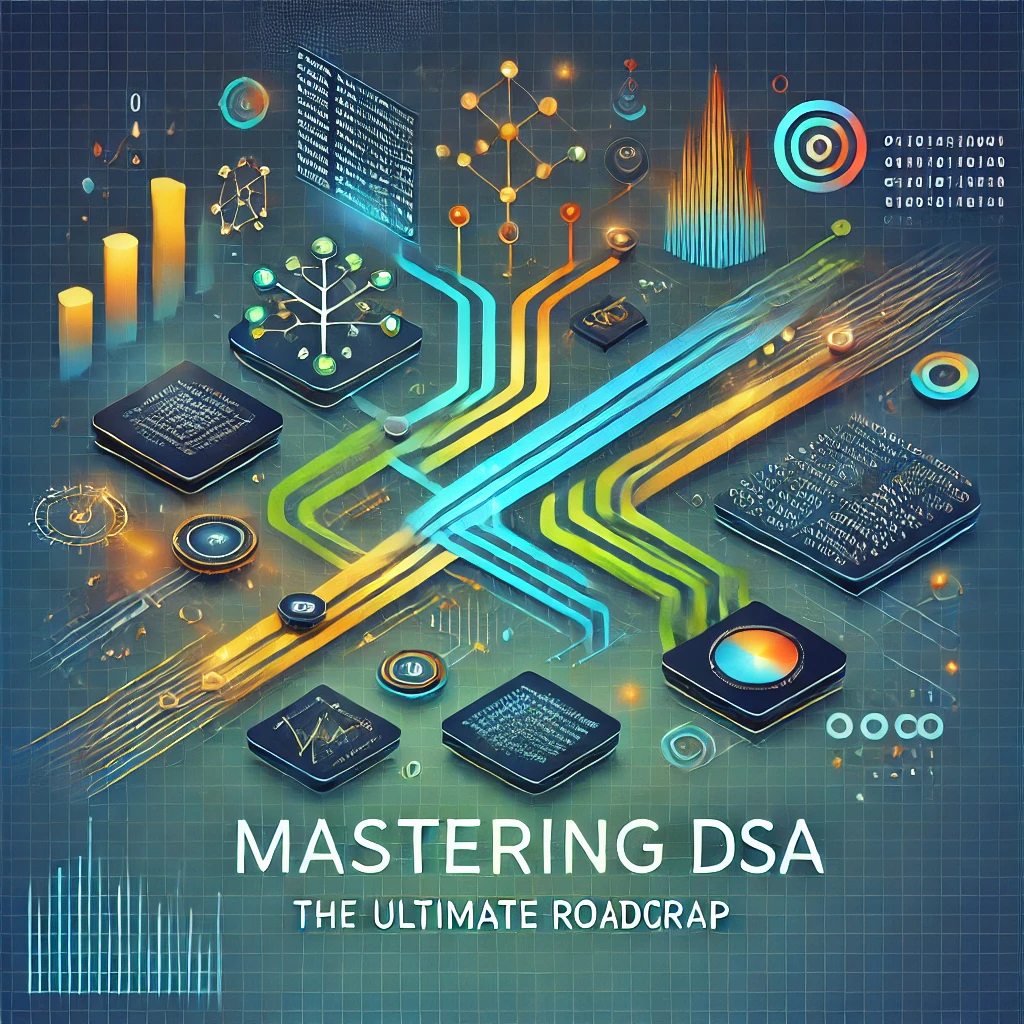Data Structures and Algorithms (DSA) form the backbone of computer science and software engineering. Whether you’re a beginner or someone aiming to ace competitive programming or technical interviews, understanding DSA is crucial. This roadmap will guide you through the essentials and advanced concepts of DSA.
Why Learn DSA?
- Problem-Solving Skills: DSA helps you solve complex problems efficiently.
- Job Opportunities: Most tech companies evaluate DSA knowledge during interviews.
- Optimized Coding: It ensures you write optimized, clean, and efficient code.
The Roadmap
1. Understand the Basics
Before diving into DSA, solidify your foundation in programming.
- Languages to Learn: C++, Java, Python, or JavaScript
- Key Concepts: Variables, loops, functions, recursion, and object-oriented programming (OOP)
2. Learn Time and Space Complexity
- Understand Big O, Big Ω, and Big Θ notations.
- Analyze algorithms for time and space efficiency.
- Practice comparing different algorithms based on complexity.
3. Core Data Structures
Learn these foundational structures first:
Arrays:
- Operations: Insertion, deletion, traversal
- Problems: Two-pointer techniques, sliding window, Kadane’s algorithm
Linked Lists:
- Types: Singly, doubly, and circular linked lists
- Problems: Reversing a list, detecting cycles
Stacks and Queues:
- Applications: Expression evaluation, backtracking, BFS
- Variants: Deque, priority queue
Hashing:
- Hash tables and hash maps
- Collision handling techniques
Trees:
- Types: Binary trees, binary search trees, AVL trees
- Traversals: Inorder, preorder, postorder
- Problems: Lowest common ancestor, diameter of a tree
Graphs:
- Representations: Adjacency matrix, adjacency list
- Traversals: BFS, DFS
- Algorithms: Dijkstra, Kruskal, Prim’s, Floyd-Warshall
4. Master Sorting and Searching Algorithms
- Sorting: Bubble sort, merge sort, quicksort, heapsort
- Searching: Binary search and its applications
- Problems: Median in a stream, k-th largest element
5. Dynamic Programming (DP)
- Start with simple problems: Fibonacci, knapsack
- Master common techniques: Memoization, tabulation
- Advanced problems: Longest increasing subsequence, matrix chain multiplication
6. Practice Pattern Recognition
Certain problem types recur in coding challenges:
- Sliding window
- Divide and conquer
- Greedy algorithms
- Backtracking
7. Competitive Programming Platforms
- Beginner: HackerRank, CodeChef
- Intermediate: LeetCode, GeeksforGeeks
- Advanced: Codeforces, TopCoder
8. Consistency and Practice
- Dedicate time daily to solve problems.
- Aim to solve problems of varying difficulty levels.
- Maintain a repository of solved problems for revision.
9. Participate in Contests
- Join coding competitions to benchmark your skills.
- Learn from solutions provided by other participants.
10. Advanced Topics
- Tries and segment trees
- Fenwick trees (Binary Indexed Trees)
- Graph algorithms: Bellman-Ford, Floyd-Warshall
- String algorithms: KMP, Rabin-Karp
Resources to Follow
- Books:
- “Introduction to Algorithms” by Cormen, Leiserson, Rivest, and Stein (CLRS)
- “Data Structures and Algorithms Made Easy” by Narasimha Karumanchi
- Online Courses:
- Coursera, Udemy, and freeCodeCamp
- MIT OpenCourseWare
- YouTube Channels:
- A2Z Lern (for comprehensive tutorials in Hindi and English)
- CS Dojo
- CodeWithHarry
Tips for Success
- Start Small: Focus on one topic at a time.
- Seek Help: Don’t hesitate to refer to documentation or forums.
- Revise Regularly: Revisit solved problems periodically.
- Stay Motivated: Celebrate small wins and progress.
Embark on your DSA journey with determination, and success will follow!






